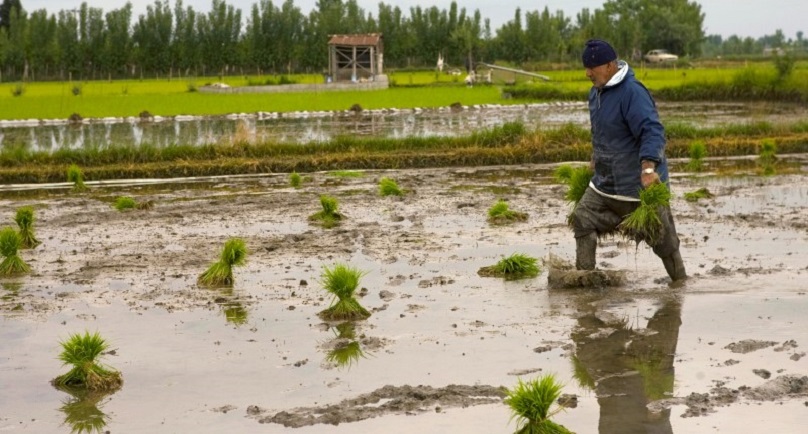Image: A farmer carries bundles of rice seedlings for workers to plant on his field near Amol, 220 km (137 miles) northeast of Tehran, May 6, 2008. REUTERS/Caren Firouz
By Bozorgmehr Sharafedin
DUBAI (Reuters) – Iran plans to turn itself into a major food exporter, hoping the lifting of sanctions will boost international trade and allow investment in the agricultural sector, an official in Iran’s state grain buying agency said.
“We are ready for a big leap in the post-sanctions era. We hope by removing the shackles of sanctions from our farmers’ hands, we can see an increase in production and even exports,” Amir Hossein Shahmir, head of international trade at the Government Trading Corporation (GTC) told Reuters.
Foreign business delegations have flocked to Tehran since the United States, European Union and United Nations lifted international sanctions last month after reaching a deal to curb and monitor Iran’s disputed nuclear program.
“Among the foreign trade delegations there are always businessmen keen to invest in Iran’s agriculture, including wheat, sugar cane and fruits. French delegations specifically were interested in investing in Iran’s agribusiness,” Shahmir said.
The government is pushing to cut Iran’s dependency on foreign imports paid for with oil revenues, and increase its exports of manufactured goods and agricultural products, President Hassan Rouhani said last week.
Abdolreza Abbassian, senior economist with the United Nations Food and Agriculture Organization, said there was more potential in the processed food sector.
“They had done quite a lot in the sanctions period to boost self reliance on domestic produce, from jams to dairy products to tomato paste and even spaghetti and macaroni,” he said.
GTC’s Shahmir said a project in the south-western province of Khuzestan to develop 500,000 hectares of irrigated agricultural land was 80 percent complete, and would boost production of wheat and other strategic products. The government estimated the cost of the project at $600 million.
WATER SHORTAGE
Iran has 6.1 million hectares of land used for farming wheat, the staple grain. Two thirds of that is unirrigated, making it’susceptible to drought. Iran is one of the world’s driest countries, with an average 250mm of rain a year.
“The country’suffers from a huge water shortage. This is a challenge,” FAO’s Abbassian said, adding he did not think the country had a comparative advantage to be an exporter of wheat.
The GTC last week banned state imports of wheat for the Iranian year starting on March 20, on the back of 2015’s strong harvest and the expected production boost. Agriculture Minister Mahmoud Hojjati has said Iran will continue to rely on imports of maize and barley.
Iran had started the year with 5 million tonnes of wheat carried over from 2015, when the El Nino weather system brought heavy rains and a good harvest, Shamir said.
Shahmir said sugar production would also increase, but Iran would still need imports to meet an expected increase in demand. Iran currently produces 1.5 million tonnes of sugar each year, and imports 1 million tonnes.
“Iran’s sugar is used in pastry, ice cream, beverages and chocolate whose consumption is highly dependent on people’s purchasing power. These are products that people would buy more when they have more money,” he said.
(Reporting by Bozorgmehr Sharafedin; Writing by Sam Wilkin,; Editing by Veronica Brown and David Evans)
Copyright 2015 Thomson Reuters. Click for Restrictions.


